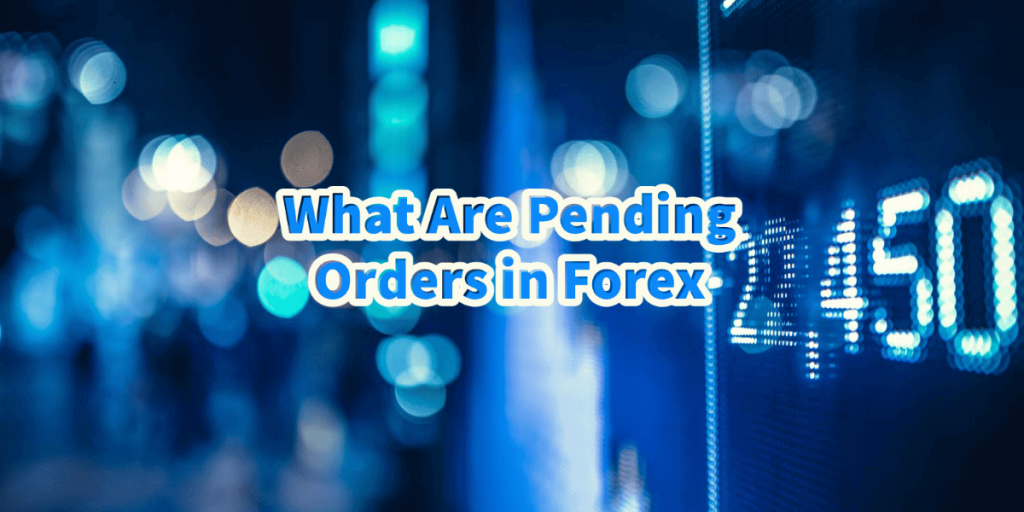
What Are Pending Orders in Forex
Do you know what pending orders in forex are? Pending orders in the forex are basically orders that are placed with a broker that aren’t executed instantly but rather are queued and waiting to be executed at a later time.
Interestingly, pending orders can be useful for traders who would like to take advantage of market conditions that may not be present at the time of their initial order.
It is desirable to remember that trading software, as well as order-entry methods, differ among brokers. Nevertheless, the main types of pending orders are the same.
How to set pending orders in forex
First of all, you need to open the order window in your forex broker’s trading software.
The next step is to pick the currency pair to trade in the above-mentioned window.
The first currency in the pair is the one that your pending order directs your broker on what to do. There are two options: buy and sell. Notably, when you purchase or sell this currency, you concurrently sell or purchase a second currency, respectively.
If you purchase the dollar (U.S. dollar) or the greenback, as many people call it, vs. the euro, you buy dollars and sell euros simultaneously.
Let’s continue; you need to pick “Pending Order” from the menu.
All you have to do is type the price at which you like the pending order to execute in the price box. In most cases, forex prices are quoted to four decimal places.
As an example, let’s take dollars and euros. Let’s assume that the U.S. dollar/euro pair presently trades for 1. So, you need 1 euro in order to buy 1 dollar. Assume you would like to purchase the greenback if the price goes up by 0.1 to 1.01. What you need to do is type “1.01” into the price box.
Types of pending orders

The next step is to pick the specific type of pending order from the available choices in your order window. As a reminder, there are several types of pending orders, more precisely, four types.
Let’s start with the “buy limit.”
Notably, it is used if you want to buy a currency pair at a level below the price (current price).
Now, let’s switch to the “buy stop” order. Interestingly, a “buy stop” order is a pending order to purchase a currency pair at a level that is above the price (current price)
What about the “sell limit” order?
It should be used when you want to sell a currency pair at a level that is above the current price.
The last one is the “sell stop” order. Interestingly, it is a kind of pending order utilized in order to sell a currency pair at a level that is below the price (current price).
In this case, pick a “buy stop” order. It will buy the U.S. dollar vs. the euro when the price (current price) reaches 1.01.
What is the next step? The next step is to pick the check box in the expiration parameter. Moreover, you must choose a date as well as the time that you would like the pending order to expire. For example, if you would like the pending order to remain open until the order carries out or until you cancel the order, just leave the check box unchecked.
Now, you need to type the number of contracts or lots you wish to trade in the volume box. In the case of a standard account, one contract portrays 100,000 units of the first currency in the pair.
The last step is to click “Place” or a similar button in order to place your pending order.
What you should know about forex
Do you know that forex is the largest financial market in the world? Yes, it is the largest financial market.
Without exaggeration, it is a global, decentralized market where numerous currencies change hands. It is worth noting that exchange rates change by the second, so the forex market is constantly in flux.
Interestingly, only a small percentage of currency transactions occur in the “real economy” involving tourism as well as international trade.
The vast majority of the currency transactions that happen in the global exchange market are bought (and sold) for speculative reasons.
The stock market is too small compared to the forex market. As a reminder, the New York Stock Exchange is the largest stock market in the world.
People hear about the New York Stock Exchange, London Stock Exchange, and other stock exchanges on a daily basis.
However, even the New York Stock Exchange is no match for the forex market.
Apart from its size, the forex market also rarely closes! It is worth mentioning that the forex market is open virtually around the clock.
Yes, it is open 24 hours a day and five days a week. The forex market is only closed on the weekends.
So, as opposed to the stock market, the forex market is open outside regular business hours.



